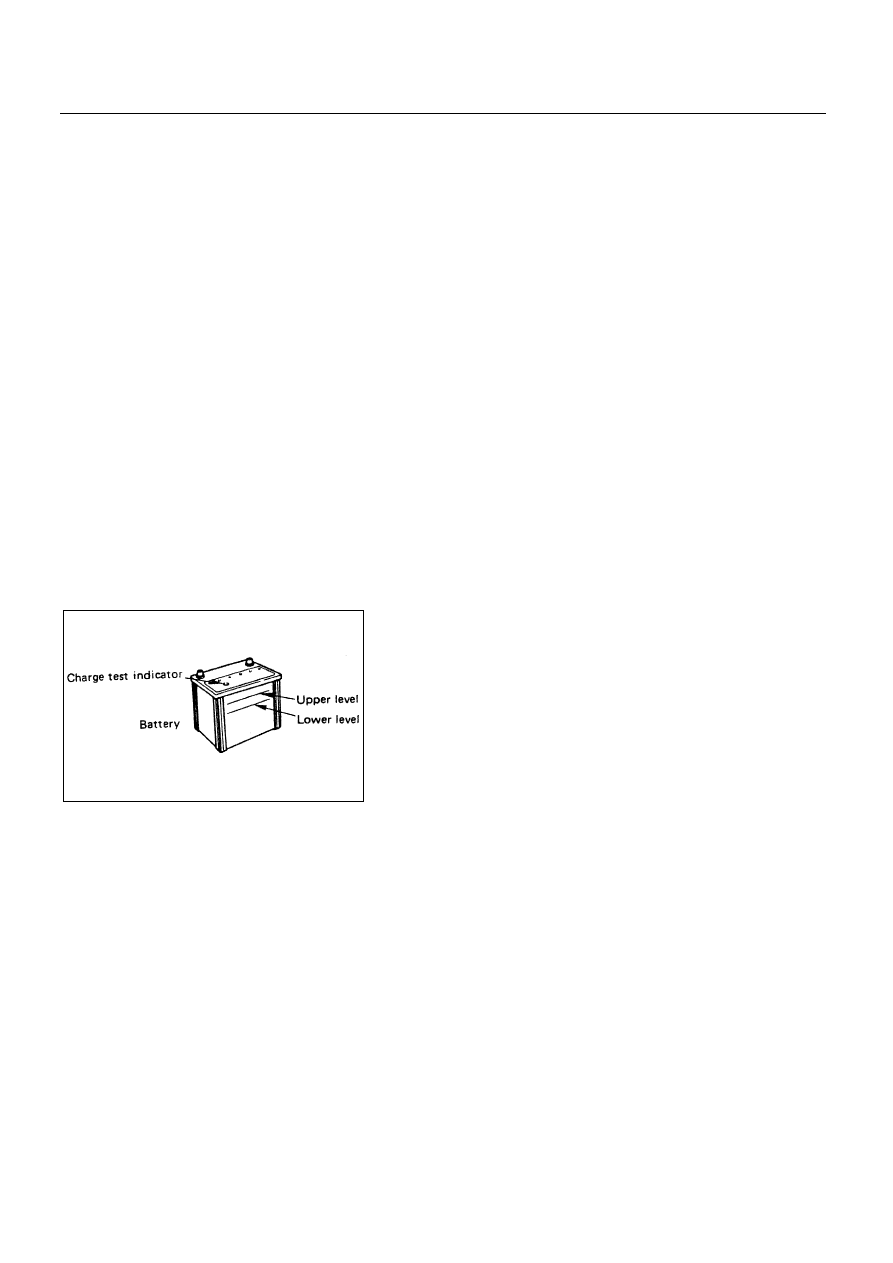Isuzu engine 4j series. Manual - part 81

6D1 – 2 ENGINE ELECTRICAL
GENERAL DESCRIPTION
There are six battery fluid caps at the top of the battery.
these are covered by a paper label.
The battery is completely sealed except for the six
small vent holes at the side. these vent holes permit
the escape of small amounts of gas generated by the
battery.
This type of battery has the following advantages over
conventional batteries.
1.
There is no need to add water during the entire
service life of the battery.
2.
The battery protects itself against overcharging.
The battery will refuse to accept an excessive
charge.
(A conventional battery will accept an excessive
charge, resulting in gassing and loss of battery
fluid.)
3.
The battery is much less vulnerable to self
discharge than a conventional type battery.
DIAGNOSIS
1. VISUAL INSPECTION
Inspect the battery for obvious physical damage, such as a
cracked or broken case, which would permit electrolyte
loss.
Replace the battery if obvious physical damage is
discovered during inspection.
Check for any other physical damage and correct it as
necessary. If not, proceed to Step 2.
2. FLUID LEVEL CHECK
The fluid level should be between the upper level line and
lower level line on side of the battery.
a. CORRECT FLUID LEVEL - Charge the battery.
b. BELOW LOWER LEVEL - Replace battery.
3. VOLTAGE CHECK
(1) Put voltmeter test leads to battery terminals.
a. VOLTAGE IS 12.4V OR ABOVE – Battery
condition OK.
b. VOLTAGE IS UNDER 12.4V - Go to procedure (2)
below.
(2) Determine fast charge amperage from specification
(See Main Data and Specifications in this section).
Fast charge battery for 30 minutes at amperage rate
no higher than specified value.
Take voltage and amperage readings after charge.
a. VOLTAGE IS ABOVE 16V AT BELOW 1/3 OF
AMPERAGE RATE - Replace battery.
b. VOLTMETER IS ABOVE 16V AT ABOVE 1/3 OF
AMPERAGE RATE - Drop charging voltage to 15V
and charge for 10 - 15 hours.
c.
VOLTAGE IS BETWEEN 12V AND 16V -
Continue charging at the same rate for an
additional 3-3.5 hours.
d. VOLTAGE IS BELOW 12V - Replace battery.
6D1-2-1.tif